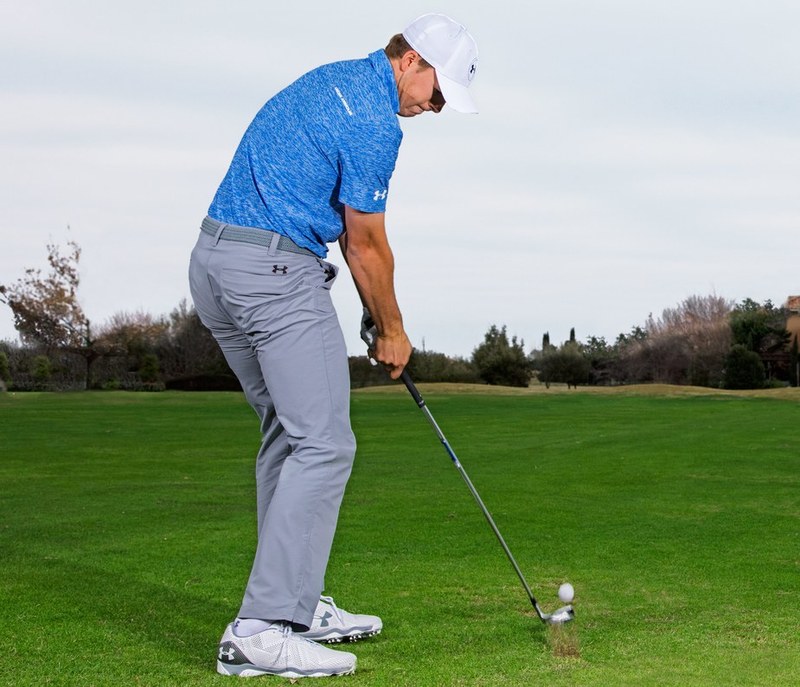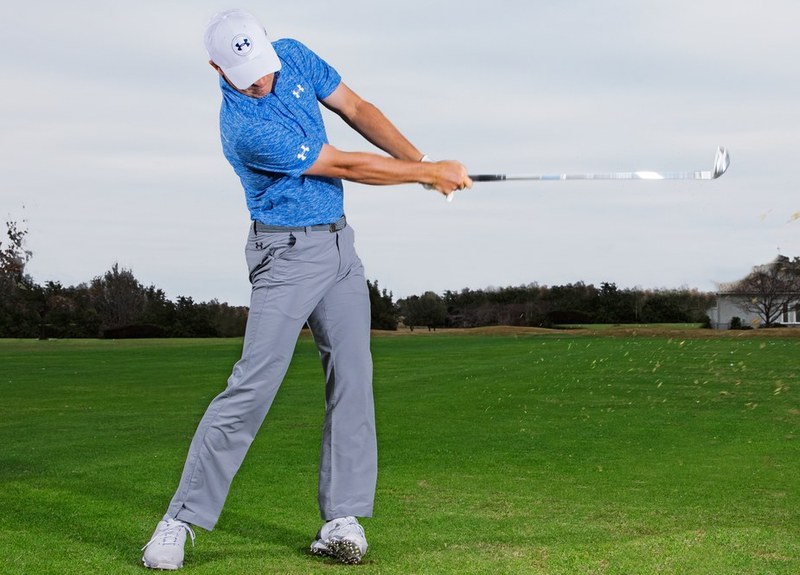
If you're looking to make some astonishing swings and in a much faster, better and smarter way, Jordan Speith is your man. We give you a lowdown of some of the swing tips Speith swears by to play like a true champion.
MOVE 1
Extend toward the target
TECHNIQUE: Make a practice swing and stop the club when it's parallel to the ground in the through-swing. What you want to see is that your right arm is fully extended, the toe of the club is straight up, and the shaft is pointed a little left of your target (above). If you nail these positions, you'll know you didn't try to scoop the ball into the air. You maintained the maximum width of your swing arc, and the clubface went from square to closed through impact. It also shows that the club tracked back to the inside again after moving down the target line.
TIP: To get you in a better follow-through position, feel as if you're really reaching out with your right arm to shake hands with someone just to the left of your target line.

MOVE 2
Hands over your right shoulder
TECHNIQUE: Swing to the top and look over your right shoulder to check the club's position. The grip should be above that shoulder with the shaft pointing roughly parallel-left of your target line (below). Your right wrist should be cupped, and your left wrist flat or slightly bowed. You're in an ideal spot to start down.
TIP: As you go back, feel your left shoulder moving downward and your right shoulder moving upward (below). Hinge your wrists so the shaft "stands up," then falls into that parallel-left position.
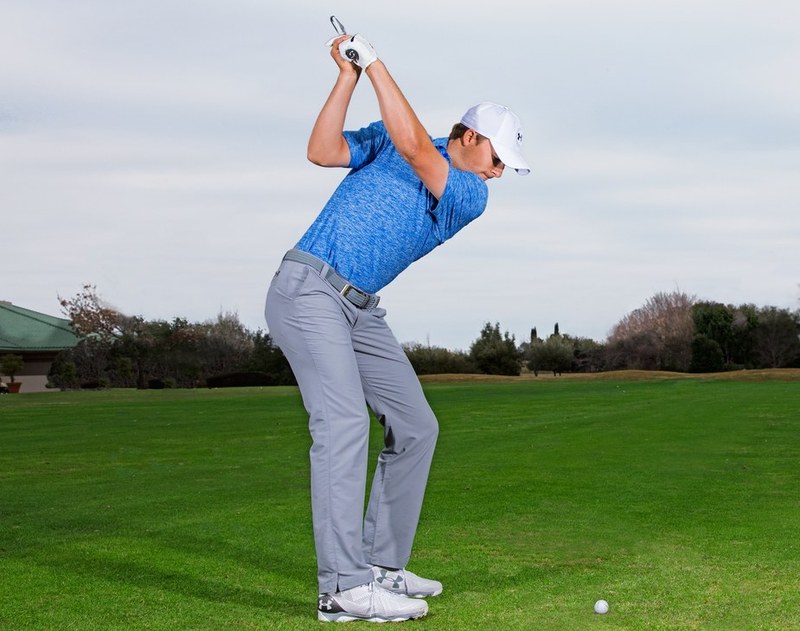
MOVE 3
Let the clubhead lag
TECHNIQUE: Pause your swing about halfway down. You're looking to see if the clubhead is noticeably farther from the target than your hands are (below)—that's known as clubhead lag. Ideally, the club swings down from inside the target line, trailing the movement of the arms and body. Cameron McCormick, my coach, likes to describe this as the grip winning the race against the clubhead back to the ball. Do this, and you'll hit it solid.
TIP: Coming down, feel like you maintain the top-of-backswing relationship you created between your hands and the club for as long as you can. In other words, don't throw away your wrist hinge too soon from the top.
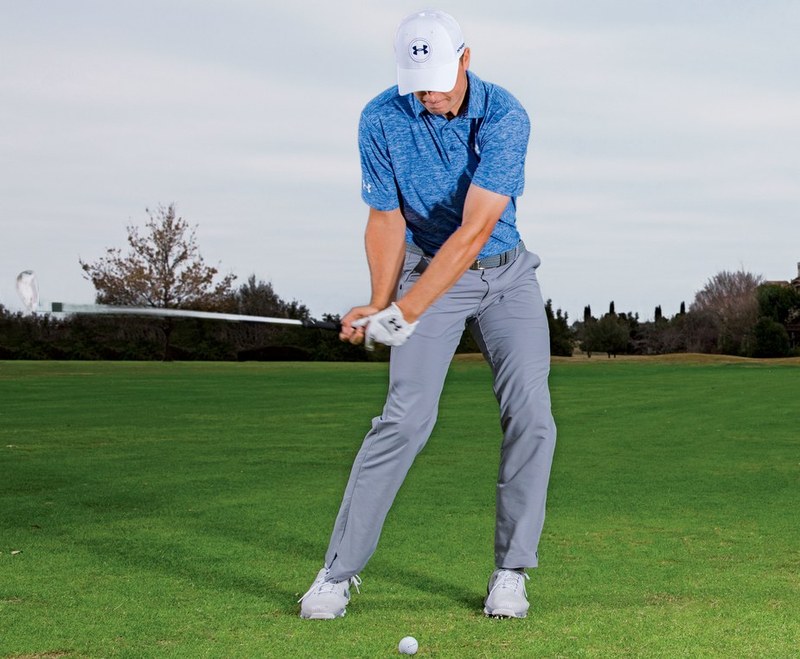
MOVE 4
Turn back, but don't sway
TECHNIQUE: Completing the backswing is critical to storing power and keeping your swing in sync. But how you get to the top is important. I turn back as far as I can without letting my body drift away from the target. If you sway off the ball, you'll have to shift laterally during the downswing to get back before impact, which is tough to do consistently. So make a backswing and check to see that you're fully coiled but haven't drifted off the ball with your upper body (below).
TIP: Pretend you've addressed the ball with the outside of your back foot on the edge of a cliff. If you sway, you're going over the side. That oughta keep you centered.
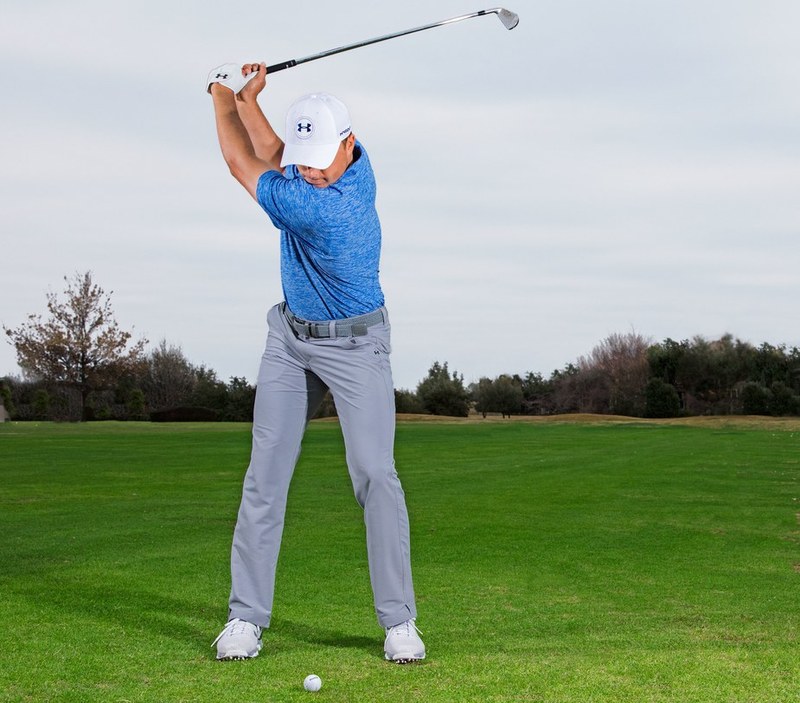
MOVE 5
Hit the ball, then the ground
TECHNIQUE: Mark a spot on the ground with a tee or twig, or by scraping a line in the grass. This represents your ball position. Now take a swing as if you were trying to hit the ball, and make sure you take a divot. Check and see where your divot started. Was it in front of the mark? That's what you want to see to hit crisp shots and maximize distance when you're hitting off the ground (below). If the divot started behind the mark, that's a fat shot. If there's no divot, that's likely a thin one.
TIP: Forget about hitting the ball. Instead, pick a spot just in front of the ball on your target line and try to strike the ground right there. If you can do that, you'll make ball-first contact without even trying.
